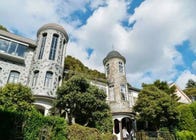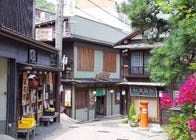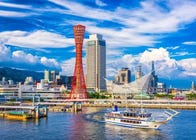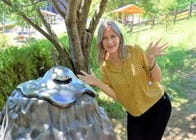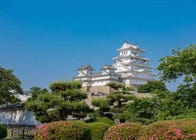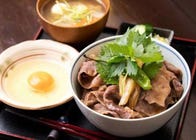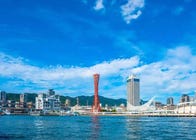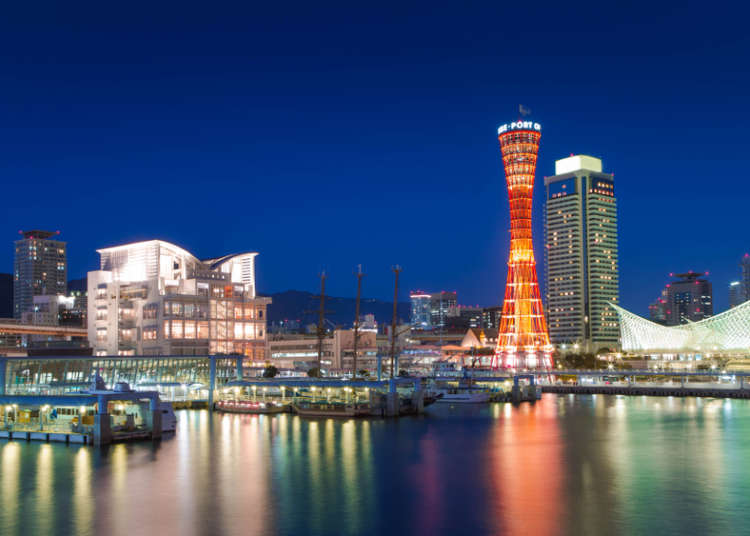
One of western Japan’s most popular cities, Kobe is well known for its resiliency following 1995’s Great Hanshin Earthquake, its international flavor, and, of course, world-famous Kobe beef. Around 30 minutes west of Osaka and located on a scenic harbor, Kobe is a natural addition to any western Japan itinerary and a great weekend destination.
Here are the 20 best things to do in Kobe, perfect for any first-time visitor.
What’s Kobe like? How do you get there?
Neighboring Osaka Prefecture to the west, Hyogo Prefecture similarly has a number of tourism-centric cities. It’s well known abroad, seeing a yearly rate of 1 million visitors from overseas. From the sea to the mountains, its vast area is home to many sightseeing locations.
Kobe is one of Hyogo Prefecture's most popular tourist destinations. Getting to Kobe is very straightforward.
・From JR Osaka Station, take the Tokaido-Sanyo Line to JR Sannomiya Station (the trip is covered under the Japan Rail Pass). Depending on the train, the trip can take around 21 minutes.
・From Kyoto, take a Shinkansen bullet train to Shin-Kobe Station (around 28 min.). From Shin-Kobe, take the Seishin-Yamate Line to Sannomiya Station (around 5 min.).
Get to know Kobe itself
1. Stroll through historical Kitano-cho
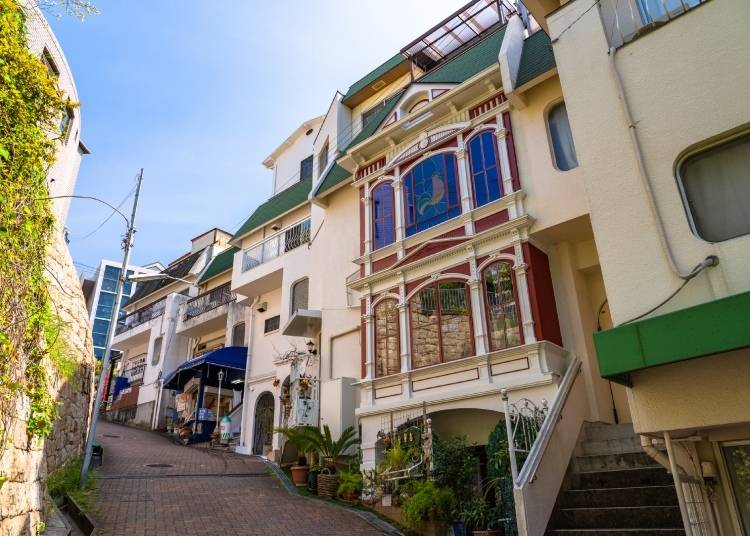
At the foot of Mt. Rokko, you’ll find Kitano-cho (or Kitano Ijinkan), a historical district in Kobe that was home to foreign dignitaries and merchants in the mid-1800s and into the early 20th century. The neighborhood’s Western-style homes and buildings offer a fascinating peek into Kobe’s colorful history and international influences. Several of the well-preserved buildings are open to the public for minimal admission fees. In this area, you can also find several stylish cafes and restaurants.
Visitors to Kitano-cho who wish to enjoy a deeper experience in the neighborhood may wish to stay at the Kobe Kitano Hotel, an auberge hotel with architecture featuring the atmosphere of the area.
2. Tantalize your senses at Kobe Nunobiki Herb Gardens

Japan’s largest herb gardens, Kobe Nunobiki Herb Gardens are home to over 75,000 herbs and flowers from about 200 varieties. Twelve different gardens showcase seasonal flora in bloom and are reached via a 10-minute ropeway ascent that offers an amazing view of Kobe.
The gardens are an excellent place to thrill your senses and treat yourself to an extravaganza of color and fragrance. The Fragrance Museum features nearly 80 essential oils to compare and delight your senses, and the Herbal Footbath is soothing for both body and mind. Open all year round, the gardens welcome guests of all ages. Kobe Nunobiki Herb Gardens are simultaneously relaxing, romantic, educational, and inspiring, well-suited to any type of visitor.
3. See the spectacular night view from the Rokko Garden Terrace or Mt. Maya
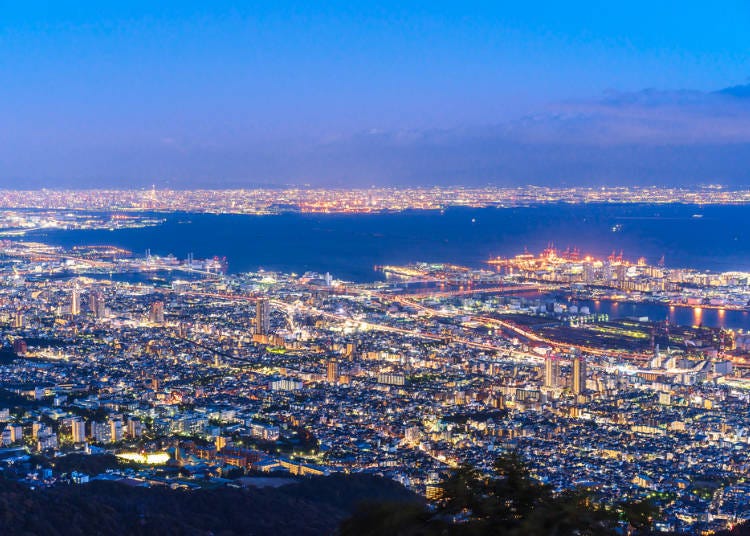
If you’re lodging around Kobe City, there’s a scene you’ll want to see – a sight said to be worth 10 million dollars. Kobe is known as one of Japan’s three most beautiful cities at night, and you’ll find the best view up north, atop the mountains of Mount Maya or Mount Rokko.
Reaching an altitude of 932m, Mt. Rokko is the place for a magnificent view of Kobe. By day, Rokko Garden Terrace is a relaxing place for a stroll, with its exotic buildings, garden, and cozy cafes. By night, the entire experience is transformed into a spectacle of light, with a dazzling view of Kobe and Osaka below.
Like many of Kobe’s sights, the Terrace is open to all ages and seasonal events add to the allure of this scenic location. Even better, Kobe’s bay area lights up after the sun sets. We encourage you to take a walk as you take in the beautiful, romantic scenery.
Sightseeing in the morning, world-class lunch in the afternoon, and a stroll against amazing scenery at night. Taking a trip to Kobe has something to offer for every part of the day, we encourage you to set up a schedule and plan out your sightseeing trip.
4. Take a sake-tasting tour of the Nada & Gogo areas
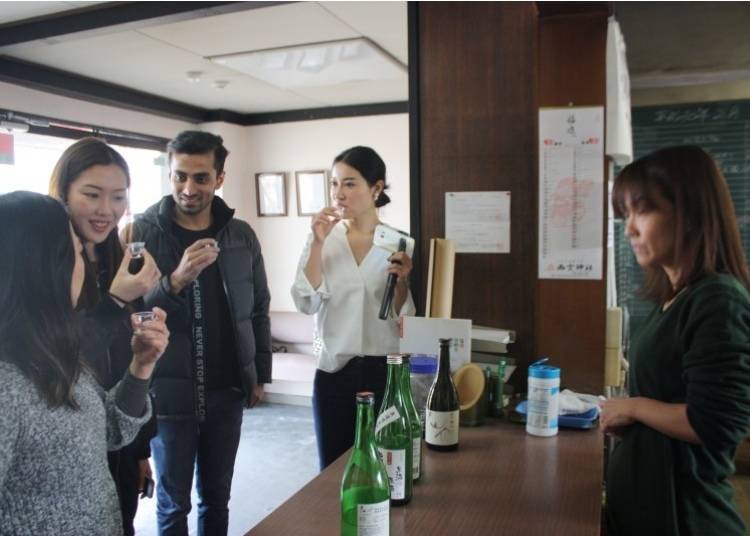
Kobe's Nada District produces a staggering one-third of Japan’s sake, so if you’re a sake connoisseur – or want to become one – a tour of this area is a memorable way to satisfy your interests.
Tours come in a variety of flavors, from taxi tours to guided tasting tours. They often include scenic locations related to sake production and Kobe’s brewing history. Knowledgeable guides introduce you to breweries’ histories and Kobe’s sake culture. Best of all, you’ll be able to sample several types of high-quality sake!
5. Enjoy fine art at the Yokoo Tadanori Museum
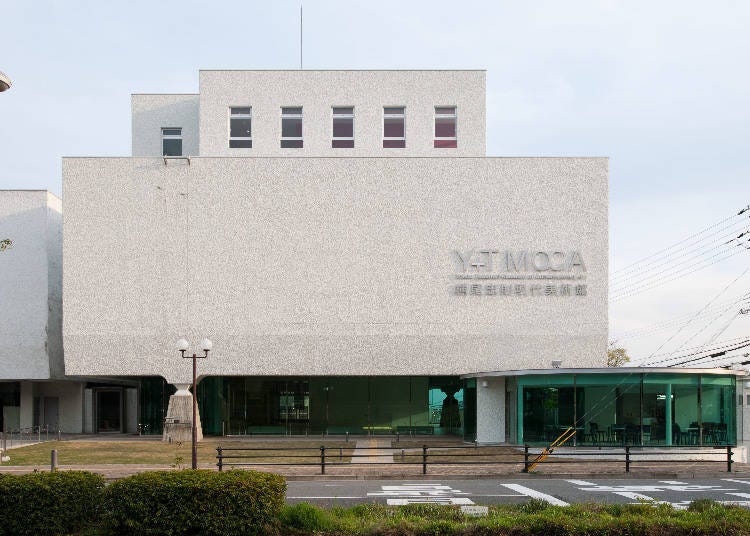
One of Japan’s most well-known artists, Yokoo Tadanori has been receiving attention since the mid-1960s. At the Yokoo Tadanori Museum of Contemporary Art, art lovers can see nearly 3,000 pieces created by Yokoo himself, as well as exhibitions by other artists.
Located in Kobe’s Nada Ward, museum entry is free for high school students and younger, and the museum also offers lectures, workshops, and more for guests of all ages.
Find rest and relaxation in and around Kobe
6. Take a trip back in time in Arima Onsen
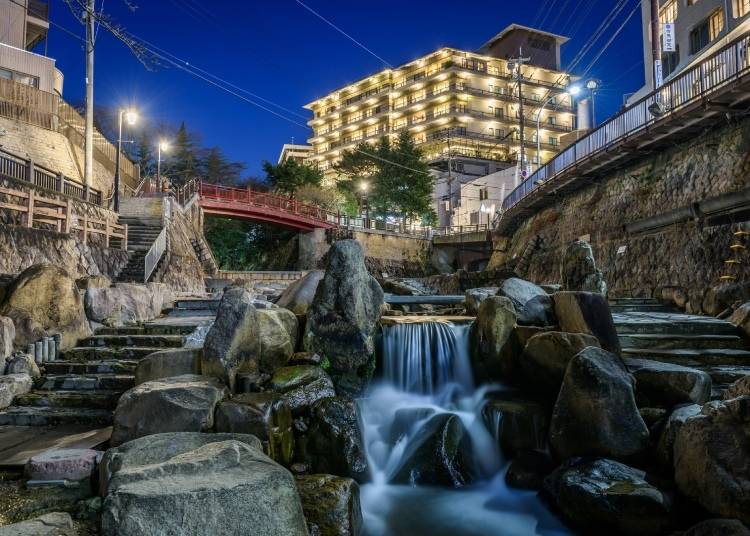
One of Japan’s three oldest hot springs and recognized as one of the best in the country, Arima Onsen is near Kobe (on the opposite side of Mt. Rokko), yet still secluded and peaceful. There you can bathe in hot springs that are beneficial to the skin and soothing for muscles and joints and multiple hotels and bathing facilities.
There’s also a distinctly artistic aspect to the area with traditional bamboo crafts produced in Arima and performances by local geisha.
Getting around town is easy with tourist maps available in English, Chinese, and Korean at the tourist information center.
8. Let go of your cares at Tsuki-no-yufune Onsen
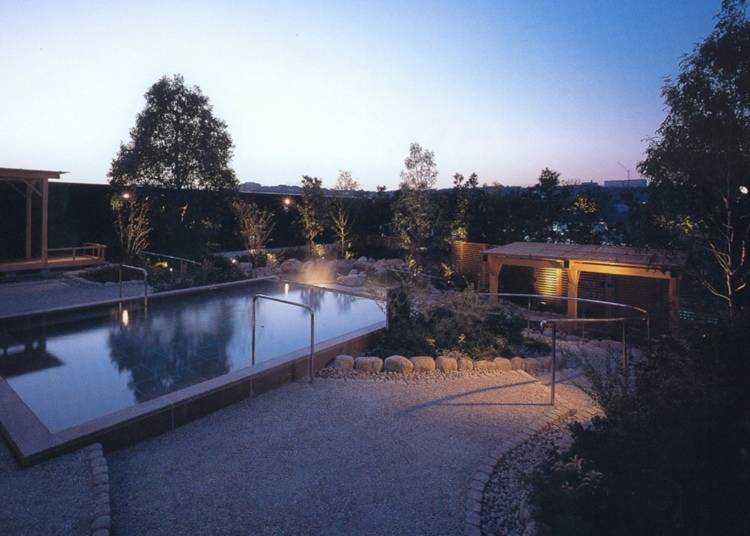
A public bath within Kobe itself, Tsuki-no-yufune has nine baths sourced from both underground springs and the Seto Inland Sea, a feature unique to the facility. With both indoor and outdoor baths and saunas, it’s a relaxing spa that’s great for unwinding after a day of sightseeing and recharging for the next leg of your tour. With modern stylings, Tsuki-no-yufune also features a variety of salons and restaurants for your all-around well-being.
Guests of all ages are welcome, but please note that entrance is prohibited for persons with tattoos and services are offered in Japanese only.
8. Stroll around Sorakuen Garden
Also in the heart of the city, Sorakuen Garden is an oasis of nature in the midst of Kobe’s thriving urban cityscape. Completed a century ago, it’s an easily accessible place to take in the artistry of a classic Japanese garden and is beautiful throughout all four seasons, with the spring azalea festival and autumn chrysanthemum exhibit serving as annual highlights.
-

-
Address
5-3-1, Nakayamatedori, Chuo-ku, Kobe-shi, Hyogo, 650-0004
View Map -
Nearest Station
Kenchomae Station (Seishin-yamate Line)
5 minutes on foot
- Phone Number 078-351-5155
-
Address
5-3-1, Nakayamatedori, Chuo-ku, Kobe-shi, Hyogo, 650-0004
Explore around Kobe Port
9. Enjoy snack-walking around Kobe’s Chinatown - Nankin-machi
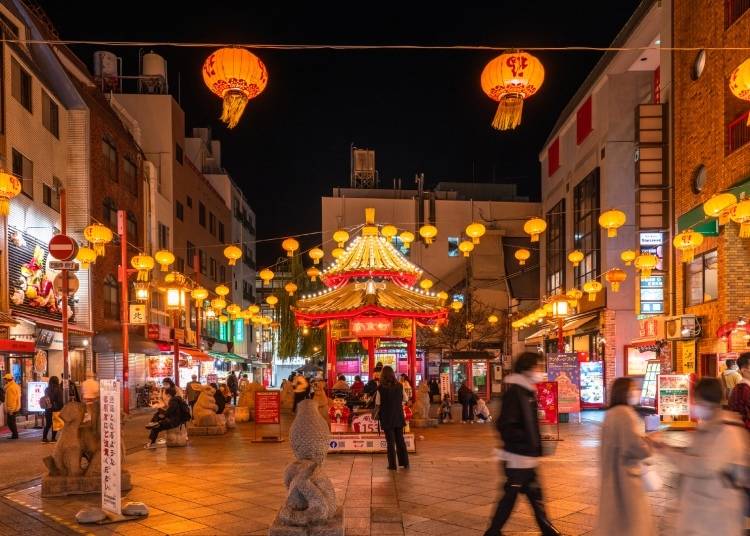
Central Kobe’s famed “Chinatown,” Nankin-machi is a fascinating little pocket of international history and culture in the hear of the city. It’s a fun place for a stroll as you explore the city and easily fits into a full day of sightseeing. It has a somewhat retro vibe to it and many people like to stop by for an authentic Chinese meal at one of the neighborhood’s many shops and restaurants. Nakin-machi is a colorful addition, figuratively and literally, to Kobe’s cultural landscape.
-

-
Address
Motomachidori, Chuo-ku, Kobe-shi, Hyogo, Sakaechodori, 650-0022
View Map -
Nearest Station
Kyukyoryuchidaimarumae Station (Kaigan Line (yume-kamome))
2 minutes on foot
- Phone Number 078-332-2896
-
Address
Motomachidori, Chuo-ku, Kobe-shi, Hyogo, Sakaechodori, 650-0022
10. Snap a selfie with Kobe Port Tower
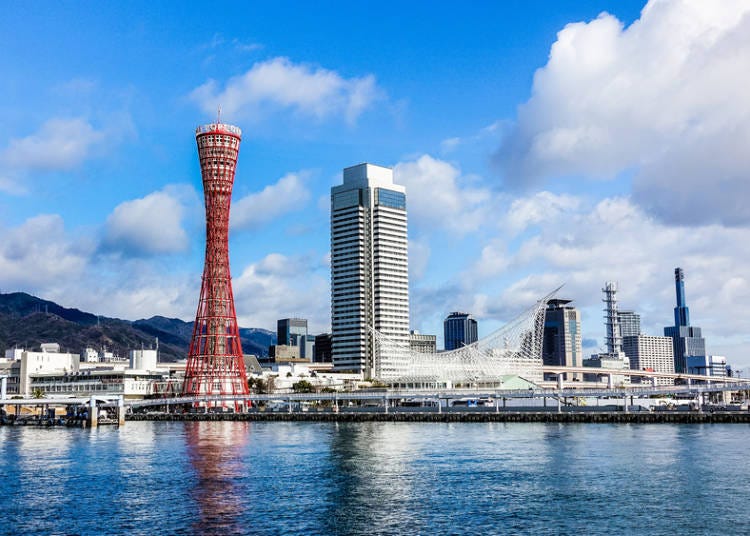
Although it’s currently closed for renovation (planned to reopen in July 2023), Kobe Port Tower still stands as one of the skyline’s iconic members and is a trademark photo op for any Kobe trip. Since it’s just around the corner from Kobe Station and easily visible, be sure to, at least, take a quick snapshot if you’re in the area.
-

-
Address
5-5, Hatobacho, Chuo-ku, Kobe-shi, Hyogo, 650-0042
View Map -
Nearest Station
Minatomotomachi Station (Kaigan Line (yume-kamome))
7 minutes on foot
- Phone Number 078-391-6751
-
Address
5-5, Hatobacho, Chuo-ku, Kobe-shi, Hyogo, 650-0042
11. Go shopping at Kobe MOSAIC

Speaking of the Kobe Port Tower, the Kobe MOSAIC shopping center offers an excellent vantage point for Tower pics. As for the shopping center itself, this four-floor facility is a popular destination for souvenir shopping, multi-ethnic dining, and a great view of the waterfront. The Ferris wheel gives MOSAIC and added element of fun for families.
Embark on delightful day trips from Kobe
12. Go on an anime mission at Nijigen No Mori Theme Park
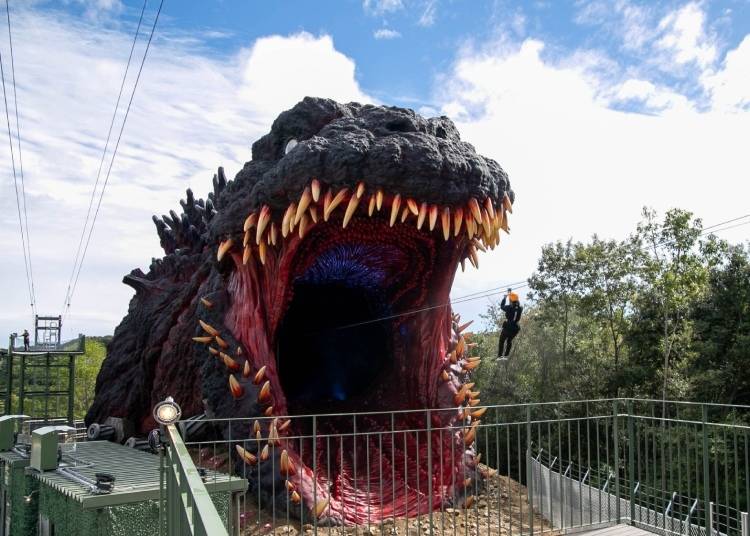
Nijigen No Mori Theme Park is located on nearby Awaji Island, and the anime and manga theme park has areas for popular entertainment franchises, including Naruto & Boruto, Godzilla, Dragon Quest, and Crayon Shin-chan. Interactive games and obstacle courses will get you right into the story of your favorite anime as you solve puzzles and tackle both physical and AR challenges.
There’s so much to see and do, it might be challenging to see the entire park in one day. But each area has a separate entry fee, so you can pick your favorite and make it the focal point of your day. With accommodations nearby, an overnight stay makes it easier to experience all the parks. Displays and pamphlets are available in English and Chinese, so Nijigen No Mori can be enjoyed by international visitors of all ages.
13. Take a half-day trip to see Himeji Castle
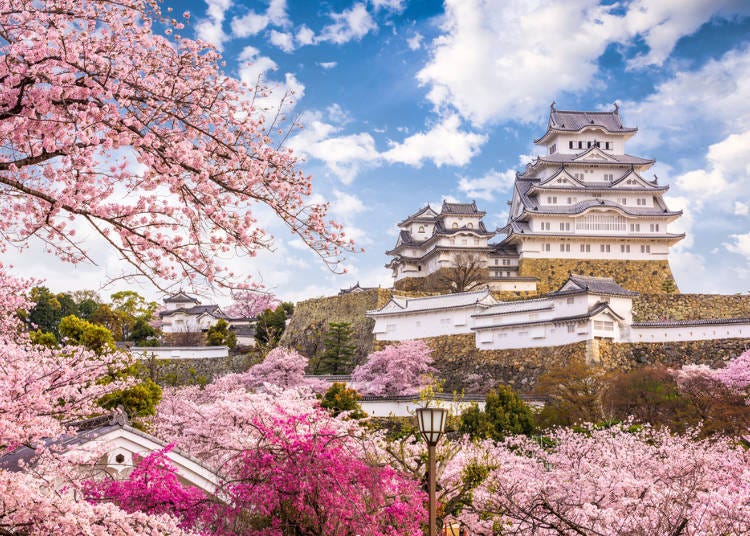
Himeji Castle, Japan’s first UNESCO World Heritage site (registered in 1993), is a short trip from Kobe and makes for an essential half-day trip.
Built on a site that’s been fortified since 1333, Himeji Castle was constructed in 1346 and has remained intact through wars and natural disasters for nearly seven centuries. Towering above Himeji City, the castle is an impressive, imposing structure that stands as a monument to Japan’s feudal history, since the age of famous Japanese warriors such as Nobunaga Oda and Hideyoshi Toyotomi.
The first thing you’ll notice is the refurbished white walls. The castle is beautiful – beautiful enough to be likened to an egret. It’s also well-regarded as a military facility, so we recommend checking out every inch of the castle’s interior. Let your imagination run through the age of samurai as you leisurely walk about it!
Please note that preschool children are not admitted to the castle, but there is a wheelchair-friendly route around the castle grounds. Guided tours are available in English and last for 1 hour and 45 minutes. However, groups are limited to 10 participants per tour, and there are only two daily tours on select dates.
-

-
Address
68, Honmachi, Himeji-shi, Hyogo, 670-0012
View Map -
Nearest Station
Himeji Station (JR Kobe Line / JR Kishin Line / JR San-yo Line / JR Bantan Line)
20 minutes on foot
- Phone Number 079-285-1146
-
Address
68, Honmachi, Himeji-shi, Hyogo, 670-0012
14. Enjoy the season at scenic Koko-en Garden
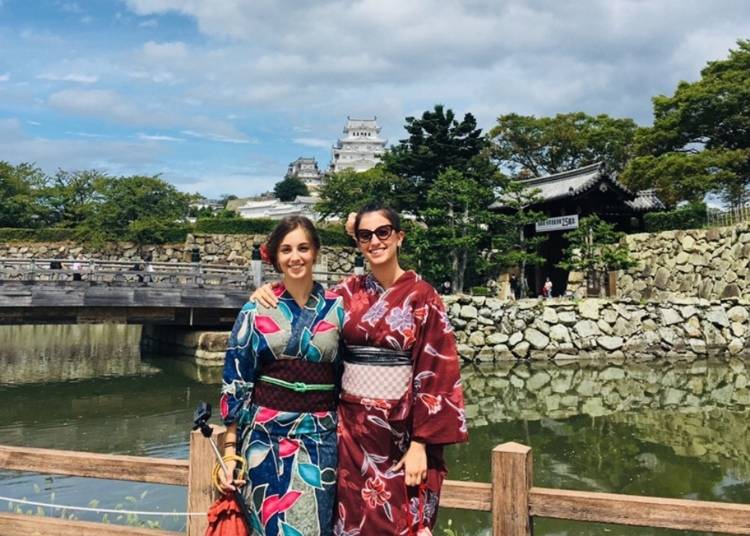
Designed in the classic style of Japan’s Edo Period, Koko-en Garden is located near Himeji Castle and opened in 1992. Koko-en hosts multiple blossom viewing and cultural events and exhibitions throughout the year and is actually comprised of nine different gardens.
Used as a filming location for multiple movies and television dramas, visitors can also experience the garden in a uniquely historical way through the “Kimono Experience” and Tea Ceremony. What better way to stroll through a perfectly landscaped Japanese garden than dressed as a member of ages past?
15. See how katana are forged & make your own knife with Kikyo Hayamitsu
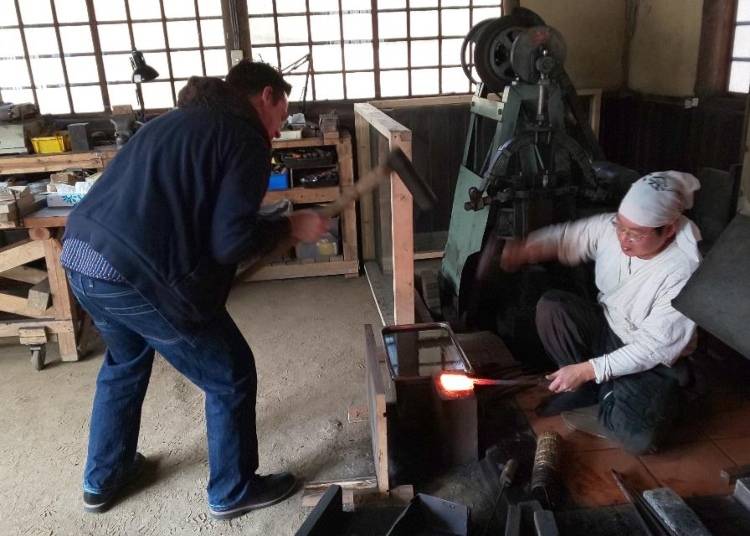
If you’ve ever wanted to see a real Japanese katana being forged, you dreams can come true as you watch classically trained Kikyo Hyamitsu continues a centuries-old legacy of artistry. As an added bonus, you can even try your hand at making your own souvenir knife. The swordsmith is about a 45-minute drive from Himeji or about an hour away by train.
16. Take a day trip to Kinosaki Onsen

If you like Japanese scenery, you would do well to visit Kinosaki Onsen in Toyooka City, located in the northeast. With over 1,300 years of history and seven public baths, the sight of town buildings by willows leaning over the river is very photogenic. This traditional Japanese scene draws in tourists from all around the world. After walking through the town, you can refresh yourself in the hot springs.
A notable differentiating facet of Kinosaki Onsen is that all seven public baths welcome tattooed bathers, unlike the vast majority of Japan’s hot springs. Onsen bathing is often a family experience in Japan.
In fact, that’s one of Hyogo Prefecture’s appeals: it has a particularly high number of storied hot spring towns. Especially famous is Arima Onsen, reachable by train from Kobe, and Yumura Onsen in the northwest. You can drive to these hot spring towns, but since you might have to pass through cramped mountain roads, you’ll want to take a train or bus instead.
Sample Kobe’s signature eats
17. Treat yourself to Kobe Beef
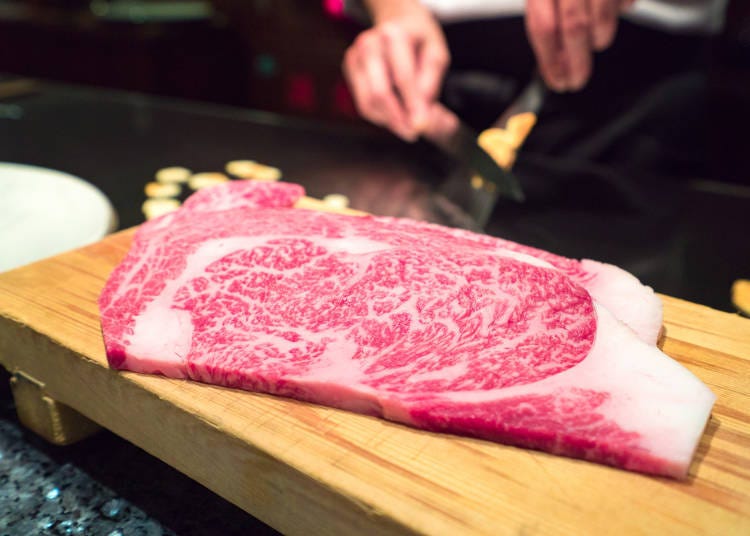
Kobe beef is the kind of delicacy you’ll want to eat no matter how much you have to spend. The title of Kobe beef is only given to the highest class of Hyogo brand Tajima Wagyu cows, and in the already high-class wagyu beef world, it stands at the top. One of its traits is the shimofuri, the delicate marbling of high-quality fat in the red meat.
If you want to really get the true taste of Kobe beef, order a simple steak. There are plenty of steakhouses around the prefecture, most of which are in Kobe, that grill their steaks on an iron plate in front of you.
Though dinner at these restaurants will often go over 10,000 yen, there are some restaurants with reasonably-priced Kobe beef lunches. If you enjoy eating meat, it’s a taste you simply must experience at least once in your lifetime.
18. Chow down on Akashiyaki
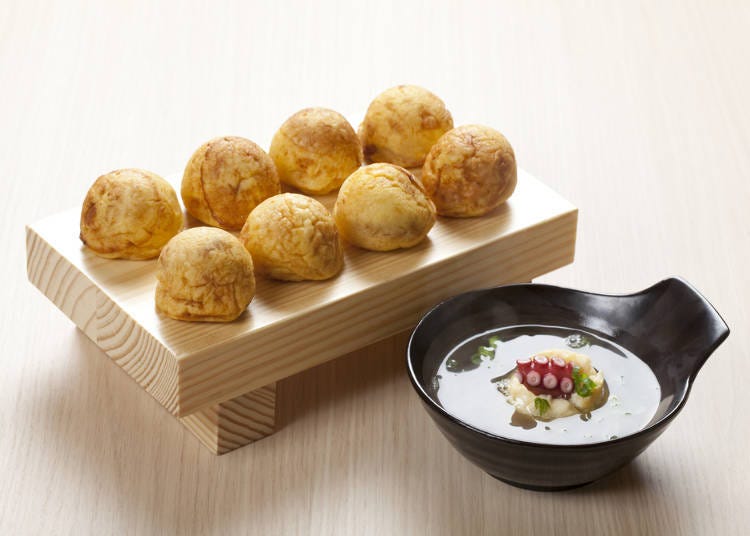
Akashiyaki is very similar to takoyaki, but isn’t garnished like the latter. As round balls, they bear a close resemblance to Osaka’s takoyaki; however, Akashiyaki has no sauce, seaweed or bonito flakes on it. Instead, you dip them in a bonito-based dashi soup.
The coating is soft and made with egg, and its lightness lets you really feel the firmness and sweetness of the octopus inside. Also, the simplicity of the coating and dashi lets each establishment that offers Akashiyaki put its own spin on the dish.
19. Enjoy Kasumi Crab

Bordered by seas on both its north and south sides, Hyogo is blessed with the bounty of the ocean. Of particular note are the snow crabs caught up north in winter. They have a particularly classy sweetness to them, especially the Kasumi Crabs caught in Kasumi Port.
Known for their sweet flavor and can be eaten at reasonable prices, Kasumi crabs are a tasty delicacy any true seafood aficionado may want to try. They’re often served at hotels and other lodgings, and visitors come from all over Japan during crab season. Kobe has several restaurants serving crab, especially in the Sannomiya area that are worth checking out.
Also, on the Seto Inland Sea side to the south, Akashi City’s port is famous for its octopi and sea breams. There are also plenty of restaurants in the city that serve the morning’s catch. You’ll find high-quality seafood at reasonable prices in the form of kaisen-don, otsukuri, and other dishes.
Text by: Gabriel Wilkinson
- Area
- Category
*Prices and options mentioned are subject to change.
*Unless stated otherwise, all prices include tax.
Popular Tours & Activitiess
Recommended places for you
-

Jukuseiniku-to Namamottsuarera Nikubaru Italian Nikutaria Sannomiya
Izakaya
Kobe, Sannomiya, Kitano
-

Kambei Sannomiyahonten
Yakiniku
Kobe, Sannomiya, Kitano
-
Goods

Yoshida Gennojo-Roho Kyoto Buddhist Altars
Gift Shops
Nijo Castle, Kyoto Imperial Palace
-

Kanzenkoshitsuyakinikutabehodai Gyugyu Paradise Sannomiya
Yakiniku
Kobe, Sannomiya, Kitano
-

Tsutenkaku Tower
Landmarks
Shinsekai, Tennouji, Tsuruhashi
-

ISHIDAYA Hanare
Yakiniku
Kobe, Sannomiya, Kitano
-
Ad

Experiencing Manga as Culture, Not Just Reading It: Expo 2025 with Rumiko Takahashi
-
Ad

Café Bahnhof in Osaka: The home-roasted coffee that captivated G20 leaders!
-

November Events in Kansai: Fun Festivals, Food, and Things to Do in Kyoto & Osaka
-

Everything You Need to Know About teamLab Biovortex Kyoto (2025 Insider Guide)
by: Wemmy Chau
-

Curious About Sake? I Visited a Sake Brewery in Japan and Here's What I Learned
-

New Way to Reach Koyasan! Ride Nankai's 'GRAN Tenku' for a Heavenly Journey
by: Guest Contributor
Inspiration for Accommodations
-

Spacious Family Hotel in Namba: 20 Comfortable Stays for Family Fun
-

Charming Hotels to Enjoy the Spectacular Views of Arashiyama's Autumn Leaves from Your Room
-

Experience Stunning Views of Osaka Castle from Private Spaces: Top Hotels Near Osaka Castle
-

Recommended by Visitors! Arashiyama's Best-Rated Hotels
-

Family-Friendly Universal Studios Japan Hotel with Excellent Access
-

Enjoy a Comfortable Stay in Osaka! 10 Hotels with Convenient Airport Shuttle Services
-

Top 10 Recommended Hotels Near Namba Station with Great Access
-

Enjoy Night Views from Your Room! Recommended Hotels in Namba Area
-

Complete Guide to Buying Japanese Medicine in Japan: Phrases and Vocabulary You Need to Know
-

8 Cool Things to Do in Osaka
by: WESTPLAN
-

Michelin Star Restaurants & More: 3 Best Okonomiyaki Shops in Dotonbori Osaka
-

The Best of Japan: 11 Major Cities Every Traveler Should Visit
-

Taking Mom and Dad on a Trip to Osaka: How to Have Fun, Tips, Must-See Spots, and a 5-Day Itinerary
by: Nemi Lin
-

5 Popular Things to do in Umeda - Osaka's Central Area!
by: WESTPLAN
- #best gourmet Osaka
- #things to do Osaka
- #what to do in kyoto
- #what to bring to japan
- #best gourmet Kyoto
- #new years in Osaka
- #what to buy in nanba
- #Visiting Osaka
- #onsen tattoo friendly arima
- #daiso
- #Visiting Kyoto
- #best japanese soft drinks
- #japanese fashion culture
- #japanese convenience store snacks
- #japanese nail trends














